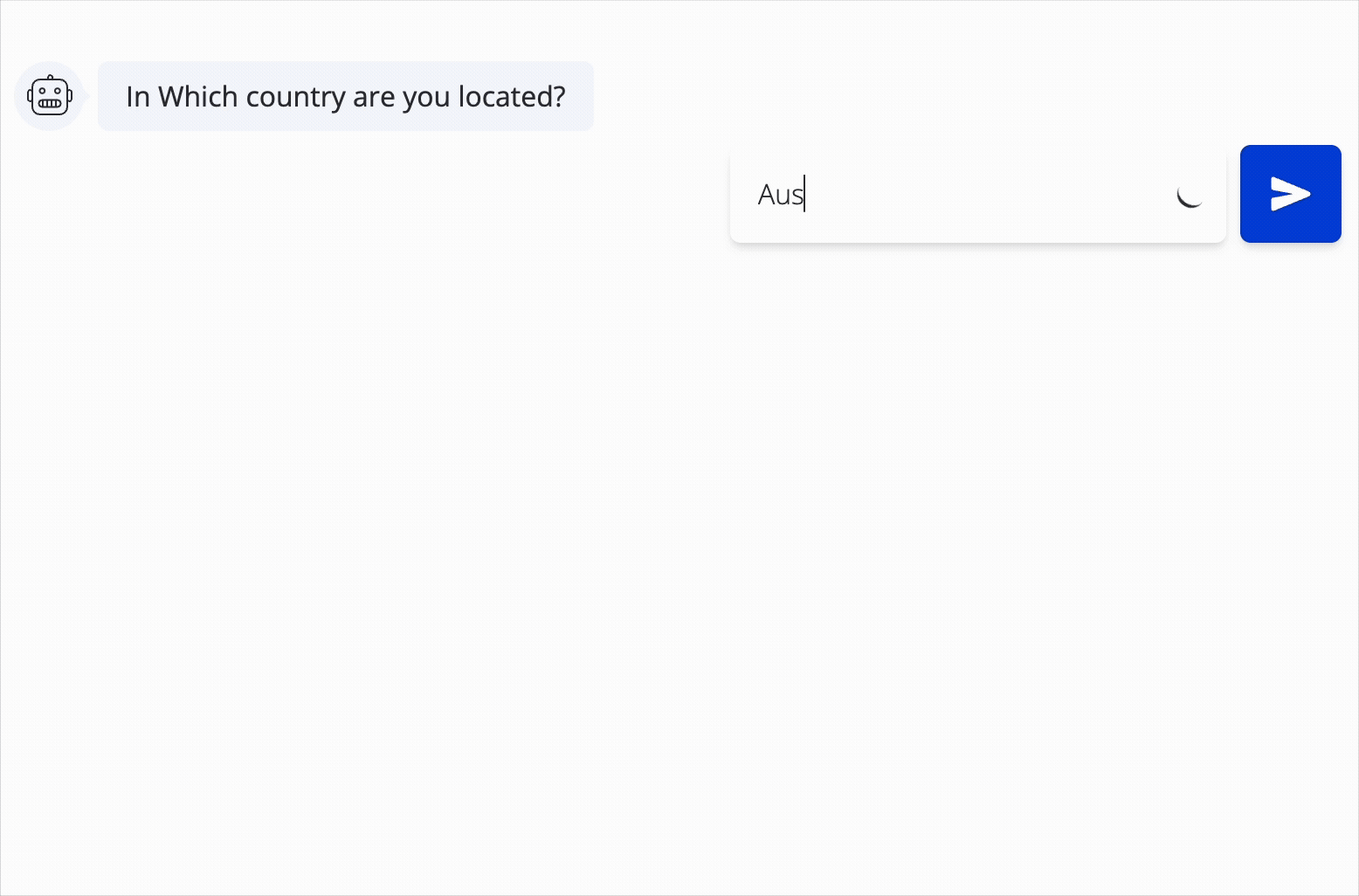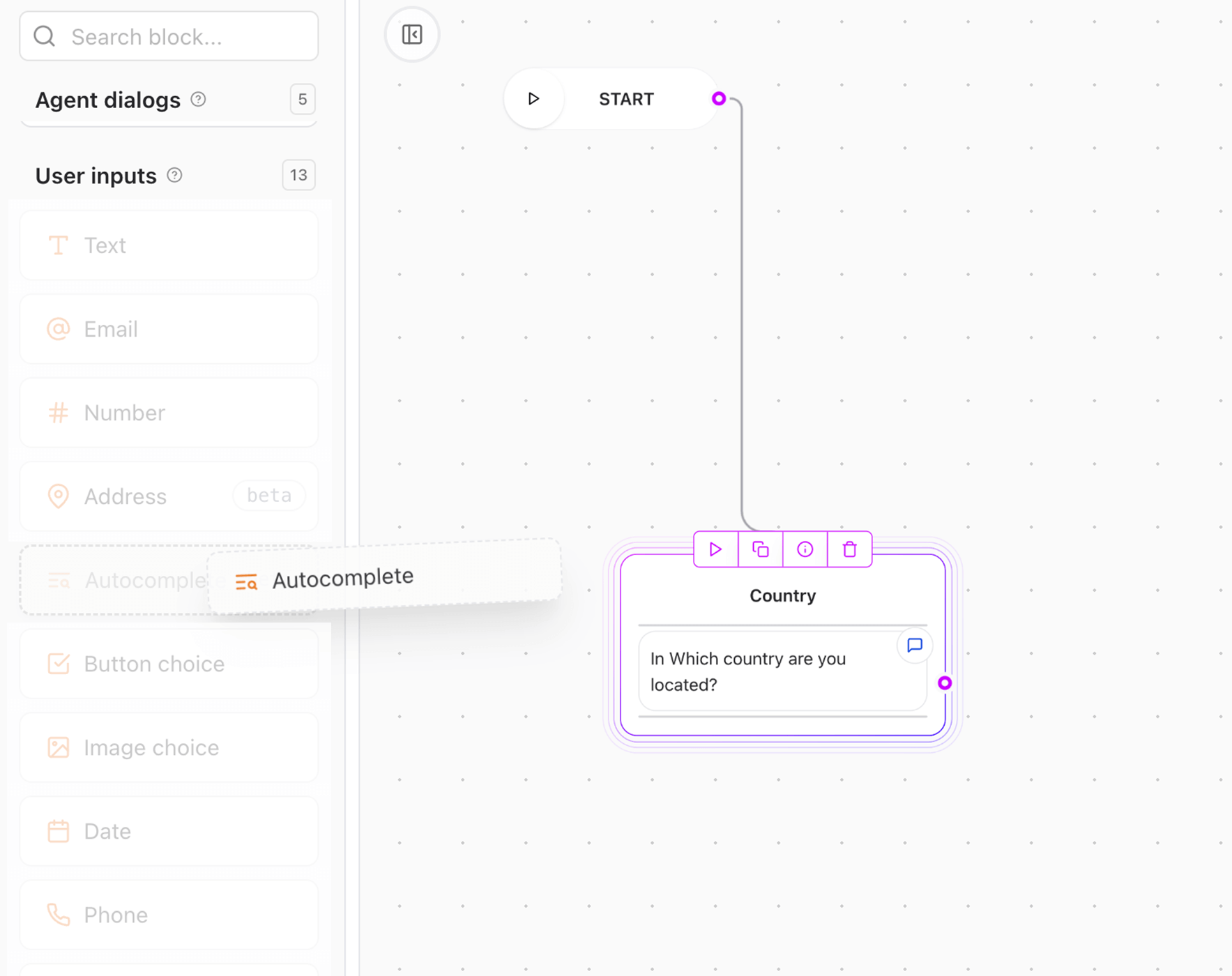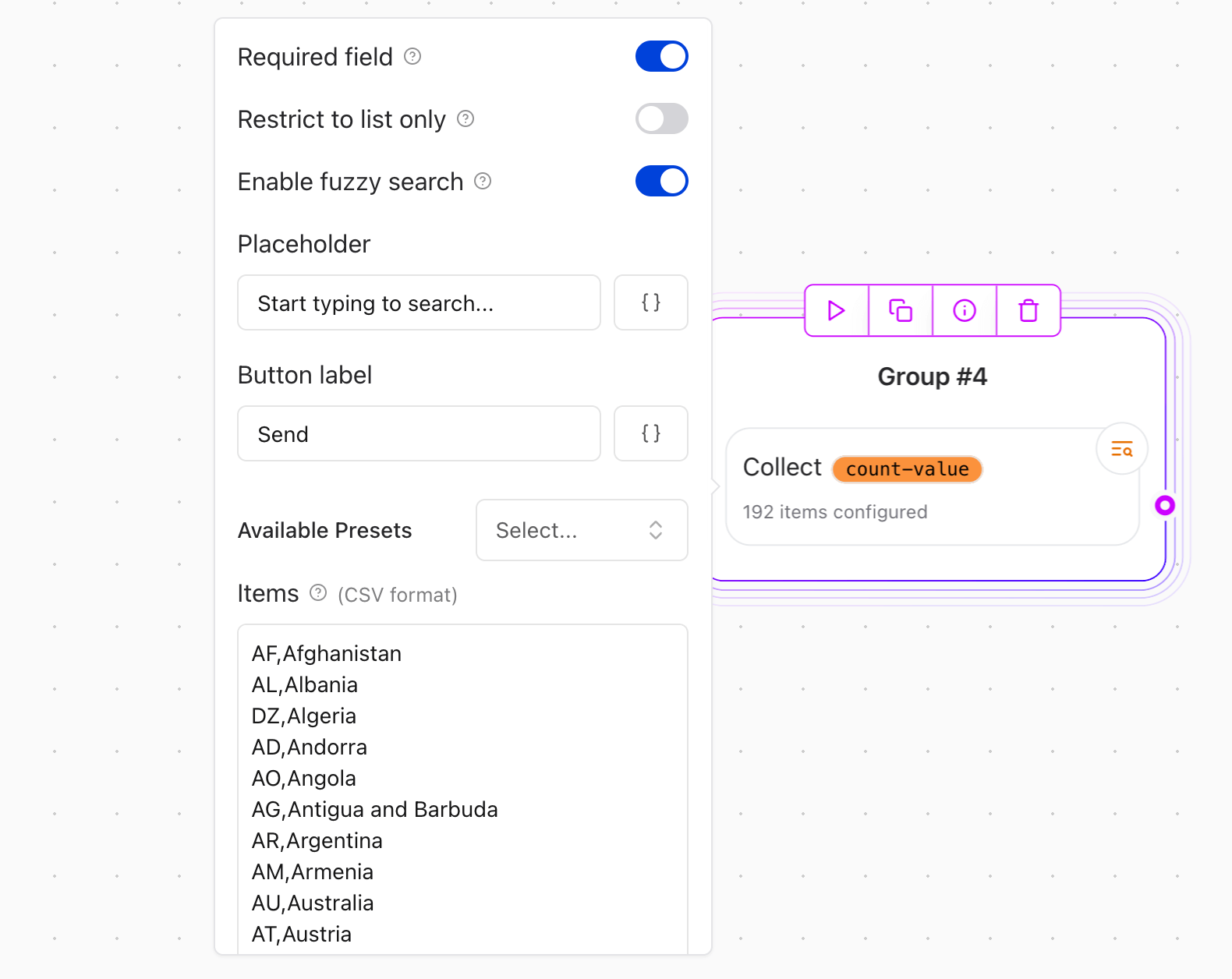
Key Features
-
Searchable Dropdown:
- Users can type to dynamically search and filter available options.
-
Support for Large Lists:
- Efficiently handles long item lists (e.g., 200+ countries) with performance optimization.
-
Key Value Pairs:
- Each item can have a display name and a return value, allowing for flexible data handling.
How It Works
- The block renders a text input field.
- As the user types, a dropdown appears with suggestions matching the input.
- Users can select an item from the dropdown, which is then saved in a specified variable
- The selected item can be used later in the flow for conditional logic or data processing.
Setup Instructions
- Add the Autocomplete Input Block:
- Drag and drop the Autocomplete input block into your flow.

- Configure the Autocomplete Block:
- Placeholder: Set a prompt like “Start typing to search…”.
- Button Label: Customize the button text (e.g., “Search”).
- Available Presets: Choose from common datasets (e.g., countries, languages) or add your own items as key-value pairs.
Configuration Options
- Required field: Make the input mandatory for submission.
- Restrict to list only: When enabled, users can only select from the provided suggestions. Custom entries will not be allowed.
- Enable fuzzy search: When enabled, the search will match results even if the user’s input contains typos or partial matches. This is useful for large datasets where exact matches are not always possible.
- Placeholder: Customizable prompt to guide users (e.g., “Start typing to search…”).
- Button label: Customizable text for the search action button.
- Available Presets: A provided list of common datasets (e.g., countries, languages, communication channels) for quick setup.
- Items:
- Define the list of items to be displayed in the dropdown.
- Each item can have a
value(e.g, FR) andname(e.g, France).
- Max suggestions: Limit the number of suggestions shown in the dropdown to improve performance and usability.
- Minimum characters to search: Set the minimum number of characters a user must type before suggestions appear. Helps to avoid irrelevant results for short inputs.
- Save selected value to variable: Store the selected item in a variable for later use in your flow. (e.g, France)
- Save selected key to variable: Optionally save the key of the selected item in a separate variable.(e.g, FR)

Example Use Case
Selecting a Country:Let users pick a country by typing part of the name. The dropdown filters and suggests matches as they type.
- Prompt user: “What country are you from?”
- The user starts typing “Al” and suggestions like “Albania” and “Algeria will appear.